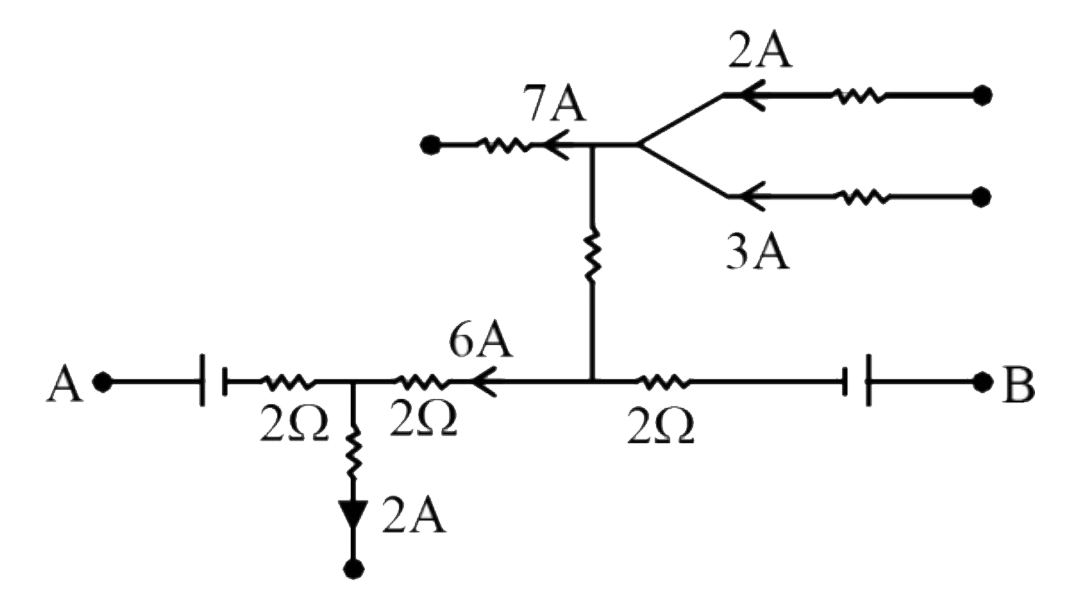What is meant by electric circuit ? Why does electric current start flowing in a circuit the moment circuit is complete ? When do we say that the potential difference across a conductor in a circuit is 1 volt ?
Calculate the potential difference between the two terminals of a battery if 12 joules of work is done in transferring 2 coulombs of charge.
⋅ A continuous conducting path consisting of wire and other resistances (like electric bulb, etc.) and a switch, between the two terminals of a cell or a battery along which an electric current flows is called an electric circuit.
⋅ It is the potential difference between the ends of the wire which makes the electric charges (or current) to flow in the wire.
The potential difference between two points is said to be 1 volt if 1 joule of work is done in moving 1 coulomb of electric charge from one point to another.
Thus, 1 volt =1joule1coulomb or 1 volt =1J1C or 1 J/C
⋅V=? W=12J Q=2C
Now, V=WQ=12J2C=6 volts
Similar Questions
When do we say that the potential difference between two points of a circuit in 1 volt?
View SolutionDefine the term 'volt'.
(b) State the relation between work, charge and potential difference from an electric circuit. Calculate the potential difference between the two terminals of a battery if 100 joules of work is required to transfer 20 coulombs of charge from one terminal of the battery to the other.
View Solution
Knowledge Check
A device used to measure the potential difference across any two points in an electric circuit is known as :
AVoltmeterBGalvanometerCGeneratorDAmmeterIn the circuit of figure, the current in 4Ω resistance is 1.2A , what is the potential difference between B and C?
 A3.6VB6.3VC1.8VD2.4V
A3.6VB6.3VC1.8VD2.4V
In the above circuit diagram emf of two batteries are equal , then the potential difference VA–VB between terminals A and B will beA−36VB+36VC+24VD−24V

Find the current flowing through each cell in the circuit shown in figure. Also calculate the potential difference across the terminals of each cell.
View Solution(a) What do you understand by the term ''potential difference''?
(b) What is meant by saying that the potential difference between two points is 1 volt?
(c) What is the potential difference between the terminals of a battery if 250 joules of work is required to transfer 20 coulombs of charge from one terminal of battery to the other?
(d) What is a voltmeter? How is a voltmeter connected in the circuit to measure the potential difference between two points. Explain with the help of a diagram.
(e) State whether a voltmeter has a high resistance or a low resistance. Give reason for your answer.
View SolutionA capacitor only is connected to an AC source. What will be the phase difference between the current flowing in the circuit and the potential difference between the plates of the capacitor?
View Solution(a) Name a device which helps to maintain potential difference across a conductor (say, a bulb).
(b) If a potential difference of 10V causes a current of 2A to flow for 1 minute, how much energy is transferred?
View SolutionCalculate the value of the resistance R in the circuit shown in the figure so that the current in the circuit is 0.2 A. What would be the potential difference between points B and E?

View Solution
